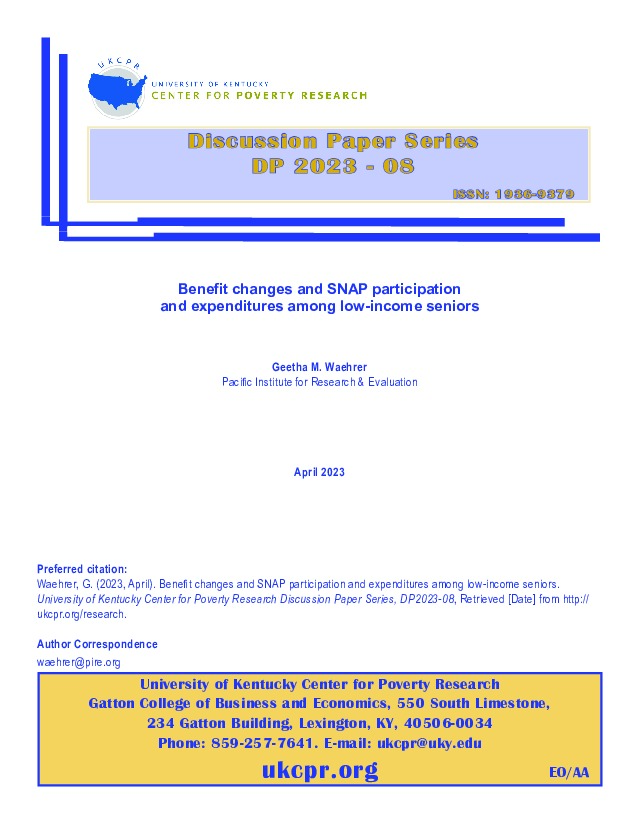This study examined changes in senior Supplemental Nutrition Assistance Program (SNAP) participation and household food and non-food expenditures following the 2009 American Recovery and Reinvestment Act (ARRA) expansion in SNAP benefits and the 2013 sunset of the benefit expansion. Using data from the 2008, 2010, 2012, and 2014 Food Security Supplements of the Current Population Survey, we find that senior SNAP participation increased significantly from 2008, prior to the implementation of the ARRA to 2010 post-ARRA, with the largest change among the oldest seniors aged 80 years and older. Seniors using meal services like home-delivered meals or congregate meals at senior centers saw larger increases in SNAP participation than those who did not use these services. There were no significant changes in senior SNAP participation following the 2013 sunset of the ARRA benefit expansion. Expenditure data from the 2007-11 and 2012-14 Consumer Expenditure Surveys shows that, in contrast to younger adults, seniors did not appear to significantly alter their food expenditures in response to changes in SNAP benefits. Among non-food categories, the 2009 increase in benefits resulted in a significant increase of $164 in transportation spending among seniors but also a decrease of $87 in their spending on utilities. Unlike younger age groups, the benefit changes did not shift seniors’ Engel curve for food-at-home spending suggesting that, on average, SNAP benefits are equivalent to cash income for seniors. Overall, our results verify that SNAP has spillover effects on transportation, utilities, healthcare and other spending among eligible adults, well beyond its stated goal of supporting food spending.
Research
SeniorsPDF Thumbnail
